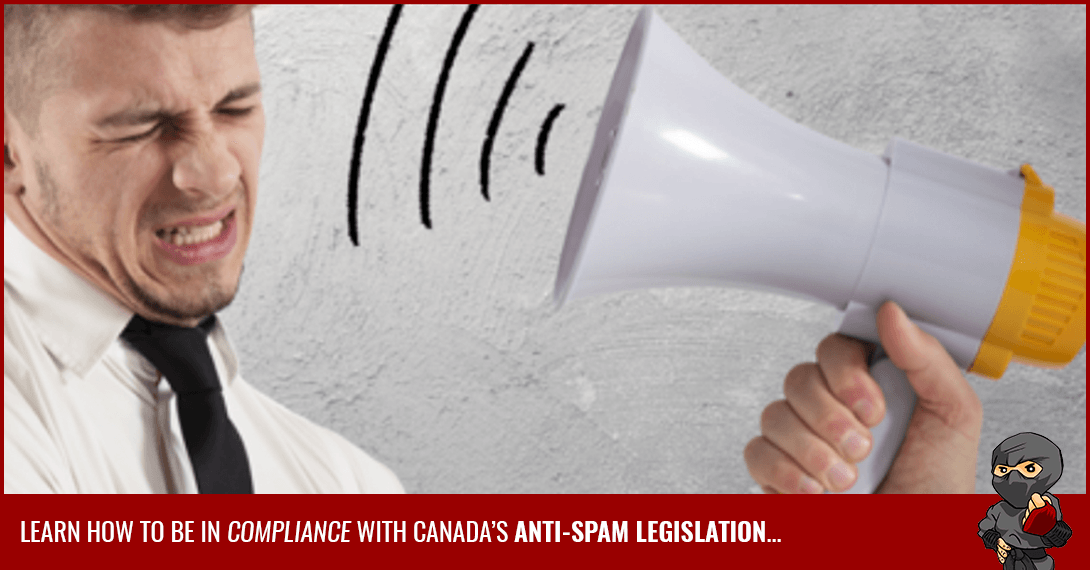Canada Anti-Spam Legislation (CASL) - What You Need To Know
Have you heard about the new Canadian Anti-Spam Legislation that's coming into effect on July 1, 2014? Are you wondering what the requirements are in order for you to be compliant and protected?
In this article, we're going to cover what businesses need to know in order to be compliant. We'll talk about implied consent and express consent and what the differences are. We'll talk about what opt-ins are and how to know if you have permission to message people. And we'll give you some recommendations for moving forward so you get on the right track.
It is important to note: this is a guide and is not legal advice. You should be consulting with a lawyer or your legal team in regards to this legislation and to make sure that you are compliant.
What You Need To Know
The new Canada Anti-Spam Legislation (or CASL) is coming into effect on July 1st, 2014, and it is crucial for marketers and business owners to know what to expect. This is arguably the most strict anti-spam legislation in the world and will change the way that emails and other forms of commercial electronic messages (CEMs) are sent.
If you're currently doing email marketing (ie. newsletters, etc) you will need to go through your lists while following these guidelines to determine who has given you consent to receive information from you and who still needs to.
The main message this legislation is sending is someone has to confirm they are okay with you sending them content via email.
They need to give you express consent.
You will no longer be allowed to hold onto the vagueness of implied consent. It's fairly straightforward as long as you understand what this means. If you're unsure of the difference between implied and explicit consent, here's a quick explanation...
Implied Consent vs. Express Consent
Express consent is given by someone when they take an action to indicate they want to receive communication from your company. Examples of this are when someone subscribes to your blog by submitting their email address, or when they click a checkbox in a form to request more information from you. Pre-checked checkboxes are not considered express consent. The site visitor must take an action in order for consent to be expressed.
Implied consent is when you have a previous business relationship with someone but they have not taken an action to indicate they want to receive communication from you. This is no longer allowed under the new legislation.
Any new contacts you add to your database need to have given express consent and be documented. The legislation does include a transitional period of 36 months beginning July 1, 2014, during which time you need to obtain express consent from your current database. The implied consent expires at the end of that transitional period.
To get express consent, make sure you are employing an opt-in strategy so you don't have to worry about that with your new contacts.
Get the Opt-In
The best way to obtain express consent as part of your current email marketing strategy is to require an opt-in to join your mailing list. When a visitor on your website wants to sign up to be on your newsletter list, have a form for them to fill out that confirms they are okay with receiving communication from you.
Another example would be including a check box the user can click with text next to it that says they agree to receive your newsletter or related content from your business. This is also considered an opt-in.
What You Must Include In Your Emails
The legislation also has requirements for what you must include in the messages you send. These include:
- You must identify yourself as the sender of the message, and give the identity of anyone you're sending it on behalf of.
- You must have your contact information or that of the person/business you are sending the email for listed in the email.
- You must give the recipient the ability to unsubscribe and/or decline their consent at any time. Their request must be honoured within 10 days.
Penalties
This may sound like a lot of extra steps that could hinder new email acquisition, but this is the new standard for email marketing and needs to be followed. The penalties for not adhering to this legislation will be enforced (and they are no small sum!) - there is a maximum penalty of $10 million per offence for corporations and $1 million for individuals.
The new rules are in the best interest of both the sender and recipient. Marketers are targeting only those who want to receive information from them and consumers have more rights when it comes to having a choice of which sources of content marketing they wish to receive in their inbox.
Please note again that this is not legal advice and you should seek professional legal advice to make sure you fully understand CASL and how to ensure your business is compliant.
For more information on the new Canada Anti-Spam Legislation, take a look through these other resources by Bennett Jones, HubSpot and TechVibes. Make sure you have a solid understanding of CASL and have made the appropriate changes by July 1st.








